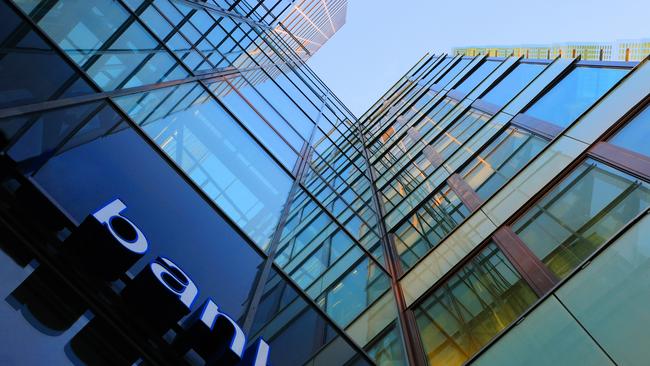How bank stocks got their mojo back

This is because sharemarkets are always forward looking. They don’t care where profits and dividends come from, rather they focus solely on where both are heading. Markets also do not necessarily care about what comes next. Though it would appear the sector locally can now potentially look forward to two to three years of unexpected buoyancy after 5½ years of (mostly) hardship.
Consequently for bank stocks we are seeing forecasts of higher dividends, plus extras, for the years ahead. Admittedly, if banks do not use this period to restructure and realign with the many challenges that lie ahead they will be facing the same quagmire all over again in a few years’ time.
So far, however, it seems banks in Australia are trying to reinvent themselves to stay relevant in the new age of disruption and technology. Witness how they are all selling off low-yielding operations (asset management, insurance, etc) while investing in areas such as “buy now, pay later”.
On top of these factors we have the sharp difference in property market dynamics today, which cannot be underestimated in terms of how beneficial this is for the banks (and other parts of the economy).
With so many investors — especially retirees — on the lookout for income, it must also be noted that forward dividend yields are again approaching 5 per cent (4.5 per cent for CBA); this remains attractive for many.
But, as per always, bank stocks are not without risk. Any interruption or slowing down in the economic healing process will weigh down share prices. And, of course, banks are still being penalised for breaching laws and all kinds of malpractices. Similarly, regulatory authorities are no doubt working towards taming the animal spirits that currently push up house prices in Australia.
In the current context, in which banking operations are recovering from last year’s short though deep recession, I’d easily say last year’s exceptional price earning ratio multiples are next to useless. You wouldn’t calculate dividend yield from last year’s payout, so why do it for EPS growth?
Historically, a sector PE range of between 9x and 15x has long been a reliable guide, with 9x the bottom during recessions and bear markets and 15x the top during the boom years.
Boom years usually see PE ratios between 13x and 15x. Bear markets are characterised by 9x-11x. This places the long-term average at around 12.5x.
An important factor to add here is the PE range does not account for the relative yield the sector offers compared with REITs, other yield providers and bond market yields. Forward looking, three banks are back on implied dividends of 5 per cent-ish (plus franking), while the market average is about 4.5 per cent, with Commonwealth Bank shares trading around the average.
These yields, however, do not account for the additional cash that will probably flow into shareholders’ coffers in the two years forthcoming.
I think the above suggests that on ex-yield measurement, banks look fairly fully valued. In line with this assessment, bank share prices have been retreating for the past week or so. But measured by the yield, it can be argued banks are merely fairly valued, but certainly not overly expensive looking.
My market sentiment indicator is based upon share prices versus price targets, which in essence measure bank share prices with where sector analysts believe they should be in six to 12 months from today. On this basis, share prices seem due for a pause, at the very least, and this also feeds into the retreat in prices we are witnessing.
I do think banks have the ability to report strong financials during the upcoming bank sector reporting season, which might lead to increased valuations and thus higher price targets, maybe even higher dividend forecasts. The latter, however, is still multiple weeks away, and in the meantime market sentiment is all about economic data and bond market movements.
One additional consideration is that inside the traditional 9x-15x PE range it was usually the case that CBA, the sector leader, would reach the top of the range, maybe slightly exceed it, with the others following at a distance. In the current context, two of the three other major banks are near the top of the PE range, while CBA shares are trading well outside of the range.
Also, share prices in general are trading on higher valuations during times of low bond yields and low inflation.
At present, the banks are not an exception. Also note that share prices still are below the levels seen pre-COVID-19. They are well off from the peak reached in April 2015.
In general terms, I would conclude that banks seem well-priced in the short term, but they should be able to rise to higher share price levels over the medium term.
Rudi Filapek-Vandyck is the editor at stock research service FNArena



As bond yields rise, bank stocks previously “cheaply” priced have benefited from a rerating. History shows cyclicals, including banks, enjoy their moment in the sun when the economic recession is in the rearview mirror.